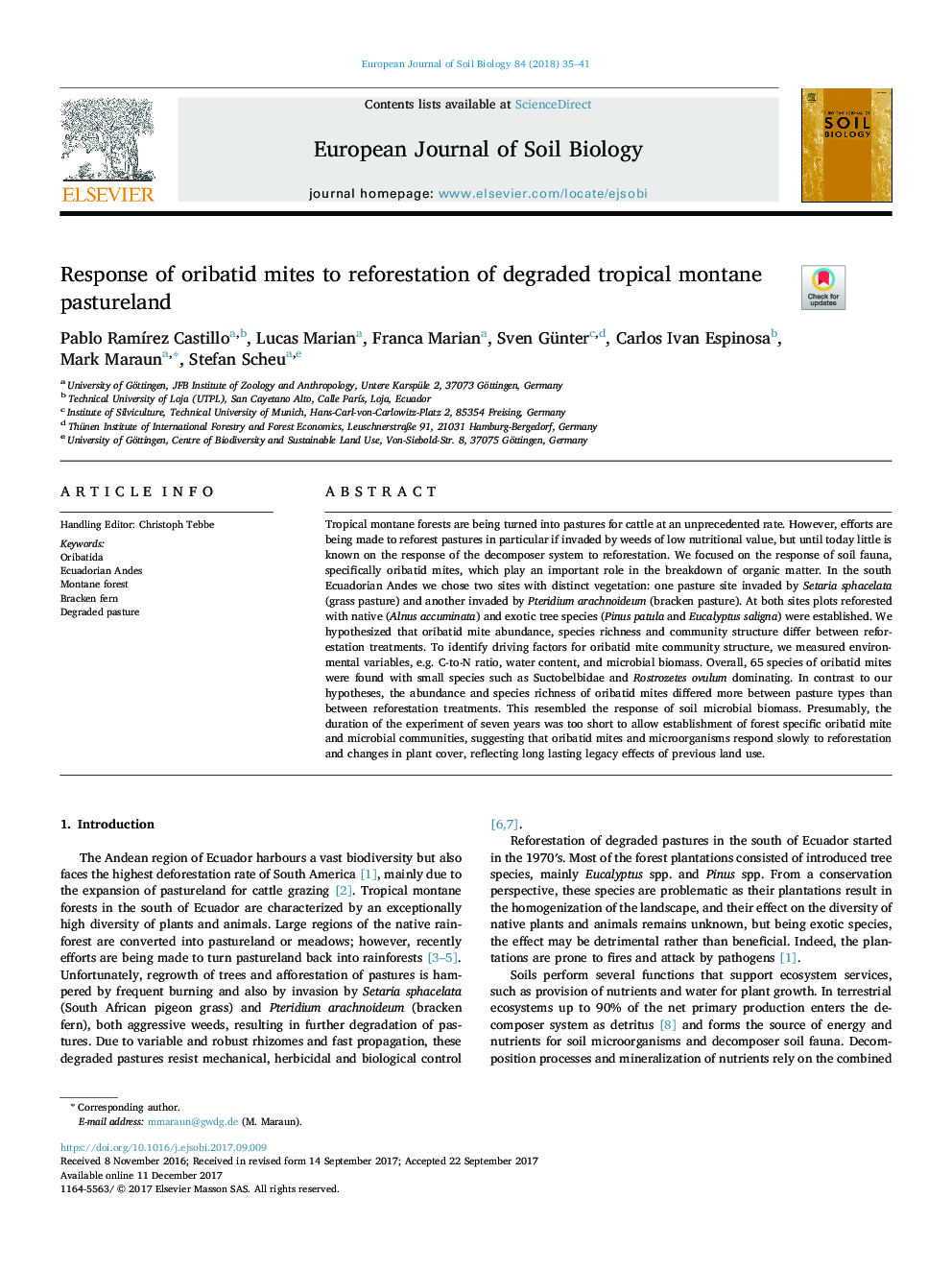| کد مقاله | کد نشریه | سال انتشار | مقاله انگلیسی | نسخه تمام متن |
|---|---|---|---|---|
| 8848403 | 1618108 | 2018 | 7 صفحه PDF | دانلود رایگان |
عنوان انگلیسی مقاله ISI
Response of oribatid mites to reforestation of degraded tropical montane pastureland
ترجمه فارسی عنوان
پاسخ مرفان به ارقام جنگل زدایی مناطق مرتعی گرمسیری مونتان
دانلود مقاله + سفارش ترجمه
دانلود مقاله ISI انگلیسی
رایگان برای ایرانیان
کلمات کلیدی
موضوعات مرتبط
علوم زیستی و بیوفناوری
علوم کشاورزی و بیولوژیک
دانش خاک شناسی
چکیده انگلیسی
Tropical montane forests are being turned into pastures for cattle at an unprecedented rate. However, efforts are being made to reforest pastures in particular if invaded by weeds of low nutritional value, but until today little is known on the response of the decomposer system to reforestation. We focused on the response of soil fauna, specifically oribatid mites, which play an important role in the breakdown of organic matter. In the south Ecuadorian Andes we chose two sites with distinct vegetation: one pasture site invaded by Setaria sphacelata (grass pasture) and another invaded by Pteridium arachnoideum (bracken pasture). At both sites plots reforested with native (Alnus accuminata) and exotic tree species (Pinus patula and Eucalyptus saligna) were established. We hypothesized that oribatid mite abundance, species richness and community structure differ between reforestation treatments. To identify driving factors for oribatid mite community structure, we measured environmental variables, e.g. C-to-N ratio, water content, and microbial biomass. Overall, 65 species of oribatid mites were found with small species such as Suctobelbidae and Rostrozetes ovulum dominating. In contrast to our hypotheses, the abundance and species richness of oribatid mites differed more between pasture types than between reforestation treatments. This resembled the response of soil microbial biomass. Presumably, the duration of the experiment of seven years was too short to allow establishment of forest specific oribatid mite and microbial communities, suggesting that oribatid mites and microorganisms respond slowly to reforestation and changes in plant cover, reflecting long lasting legacy effects of previous land use.
ناشر
Database: Elsevier - ScienceDirect (ساینس دایرکت)
Journal: European Journal of Soil Biology - Volume 84, 2 January 2018, Pages 35-41
Journal: European Journal of Soil Biology - Volume 84, 2 January 2018, Pages 35-41
نویسندگان
Pablo RamÃrez Castillo, Lucas Marian, Franca Marian, Sven Günter, Carlos Ivan Espinosa, Mark Maraun, Stefan Scheu,
